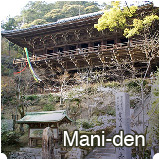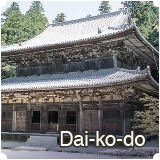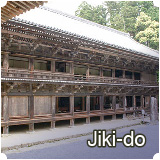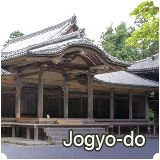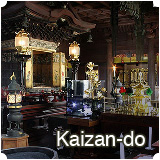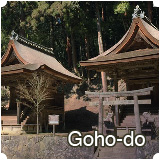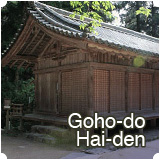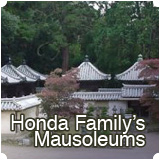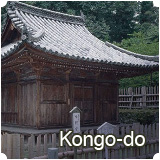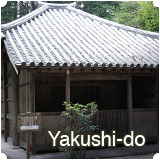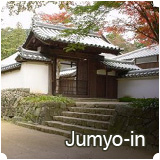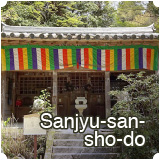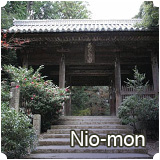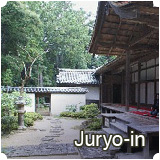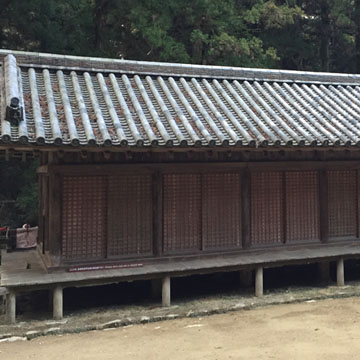Introduction
The 33-sacred Temple Kannon Pilgrimage Route in Saigoku
Shoshazan Engyoji Temple is the 27th on the 33-sacred temple Kannon pilgrimage route in Saigoku (the Kinki Area and Gifu Prefecture) and Mani-den, the main temple of Shoshazan Engyoji Temple, is dedicated to Roppi Nyoirin Kanzeon Bosatsu, the principal image.
The pilgrimage originates from when the retired emperor Kazan joined the priesthood and discovered a precious seal which the holy priest, Tokudo-shonin, had buried at Nakayama Temple in Settsu Province. It was then he began his pilgrimage to the holy places.
The custom of chanting Goeika (a Buddhist sacred song or a Buddhist pilgrim’s hymn) at every amulet-issuing office began at this time. Goeika is a form of Waka (a short form of classic Japanese poetry composed of 3 lines of 5-7, 5-7, 7 in 31 syllables) which is chanted to music in which the individual sounds of the words are elongated and drawn out. These are sung at pilgrimage sites or in Buddhist memorial services.
Goeika of Shoshazan Engyoji Temple is “Harubaru-to nobore-ba shosha-no Yamaoroshi, matsu-no hibiki-mo minori-naruran”. (We climbed to the summit of Mt. Shosha as a strong wind blew down from the peak. The pines whispered as they swayed in the breeze. For us even this sound is a teaching from the Buddha.)
Tokudo-shonin (656-735), the founder of Hasedera Temple, was born at Yatabe Village, which stood near Mt. Shosha, in Ibo of Harima Province. He died at the age of 62 (718, Yoro 2nd yr) but after travelling to the afterlife he was met by Emma-daio, the King of Hell. Emma-daio advised him to make a tour of the 33 sacred Kannon places in order to erase the sins of all sentient beings. With this message, he was sent back to this world with a written pledge and 33 seals to Nakayama Temple in Settsu Province and then finally passed beyond this world, having completed his mission to benefit all beings.
270 years later, the retired emperor Kazan, entered the priesthood and visited Shoshazan Engyoji to meet Shoku-shonin, the holy priest. On his advice, the retired emperor made a pilgrimage to the sacred sites accompanied by the priest Butsugan-shonin of Ishikawa Temple in Kawachi Province. This soon led to an increase in popularity of the Kannon belief among noblemen of the time. Since the Muromachi era (1336-1573) the pilgrimage has remained popular among ordinary people.
The year 2018 (Heisei 30th yr) will be the 1300th memorial since the passing of Tokudo-shonin.
